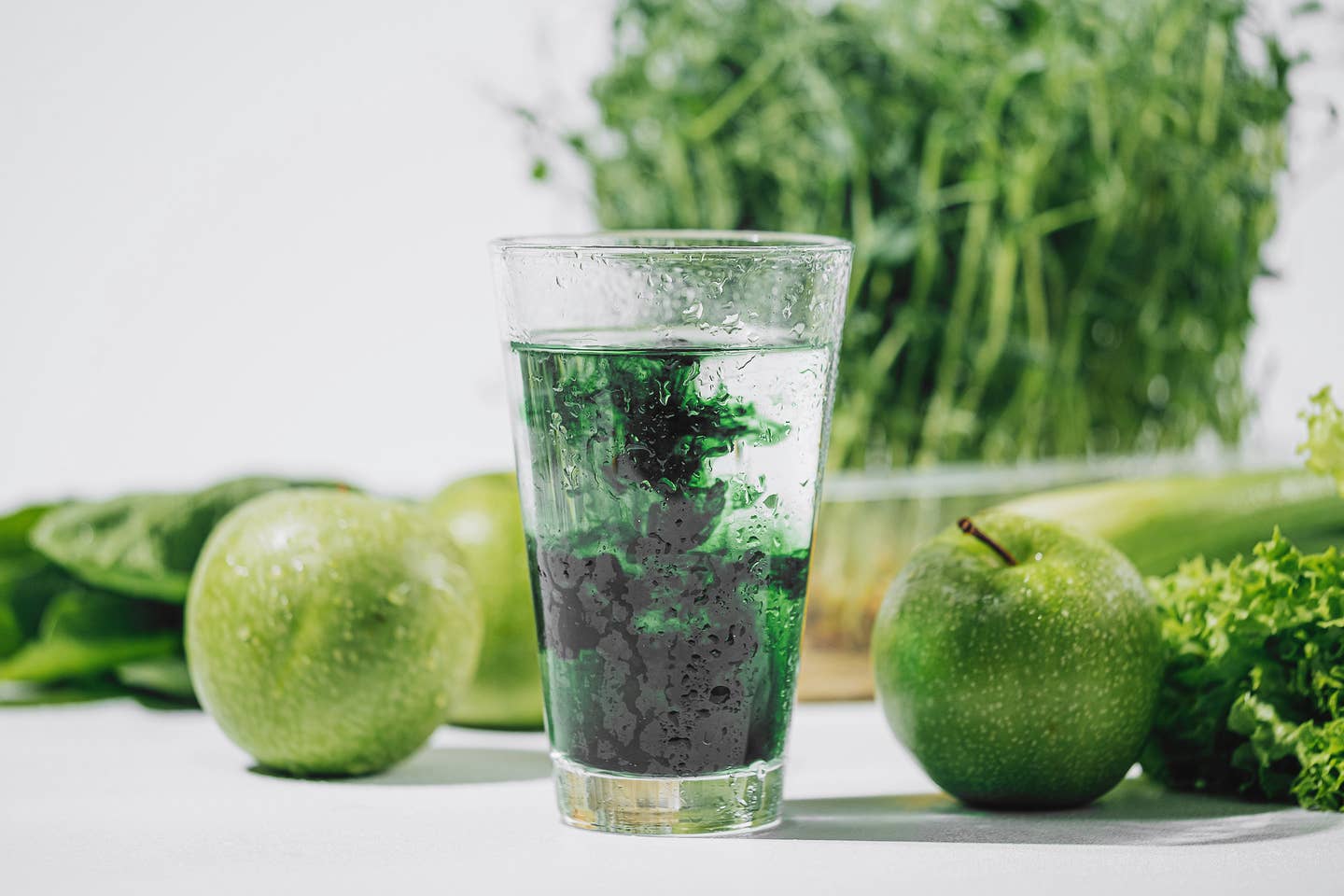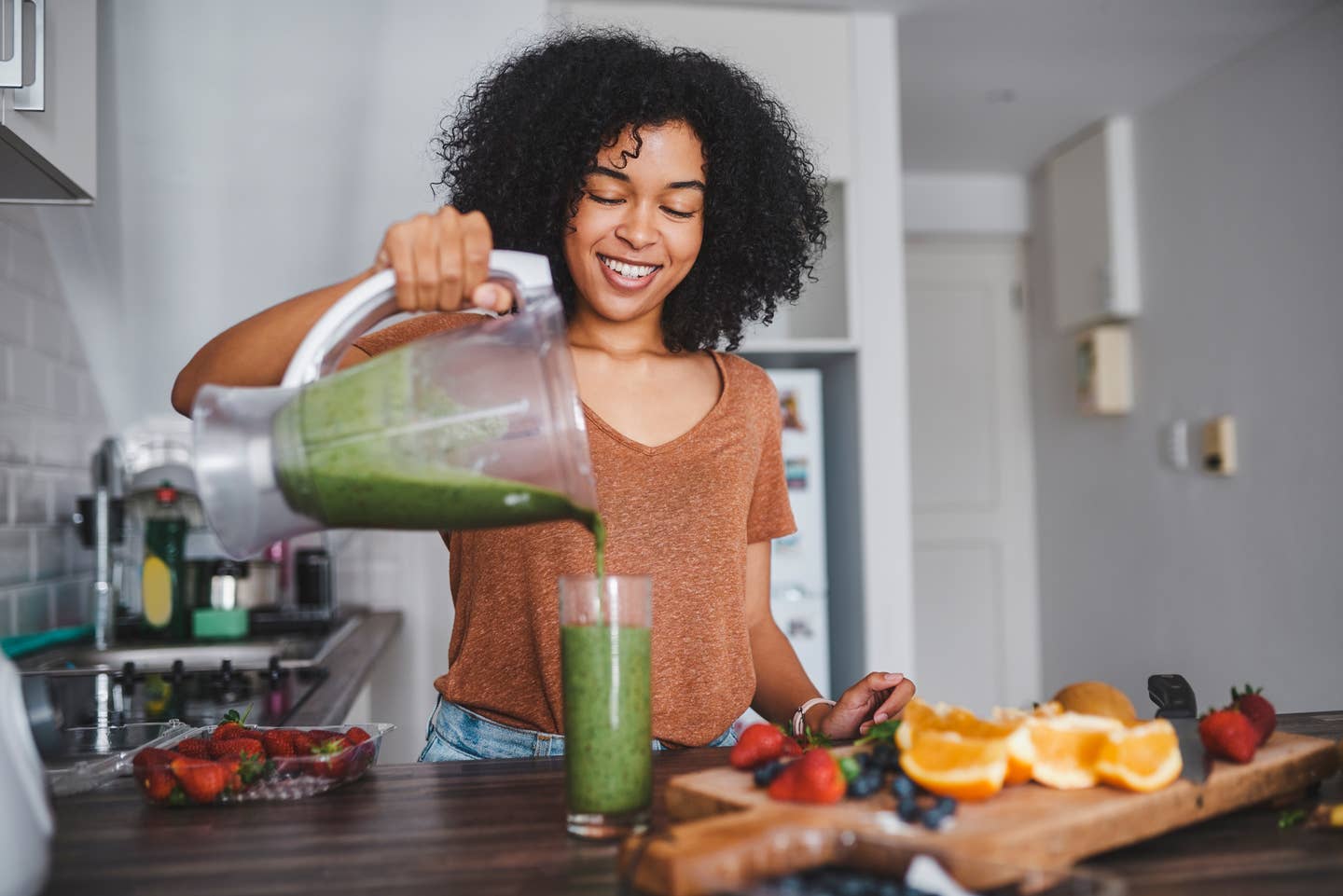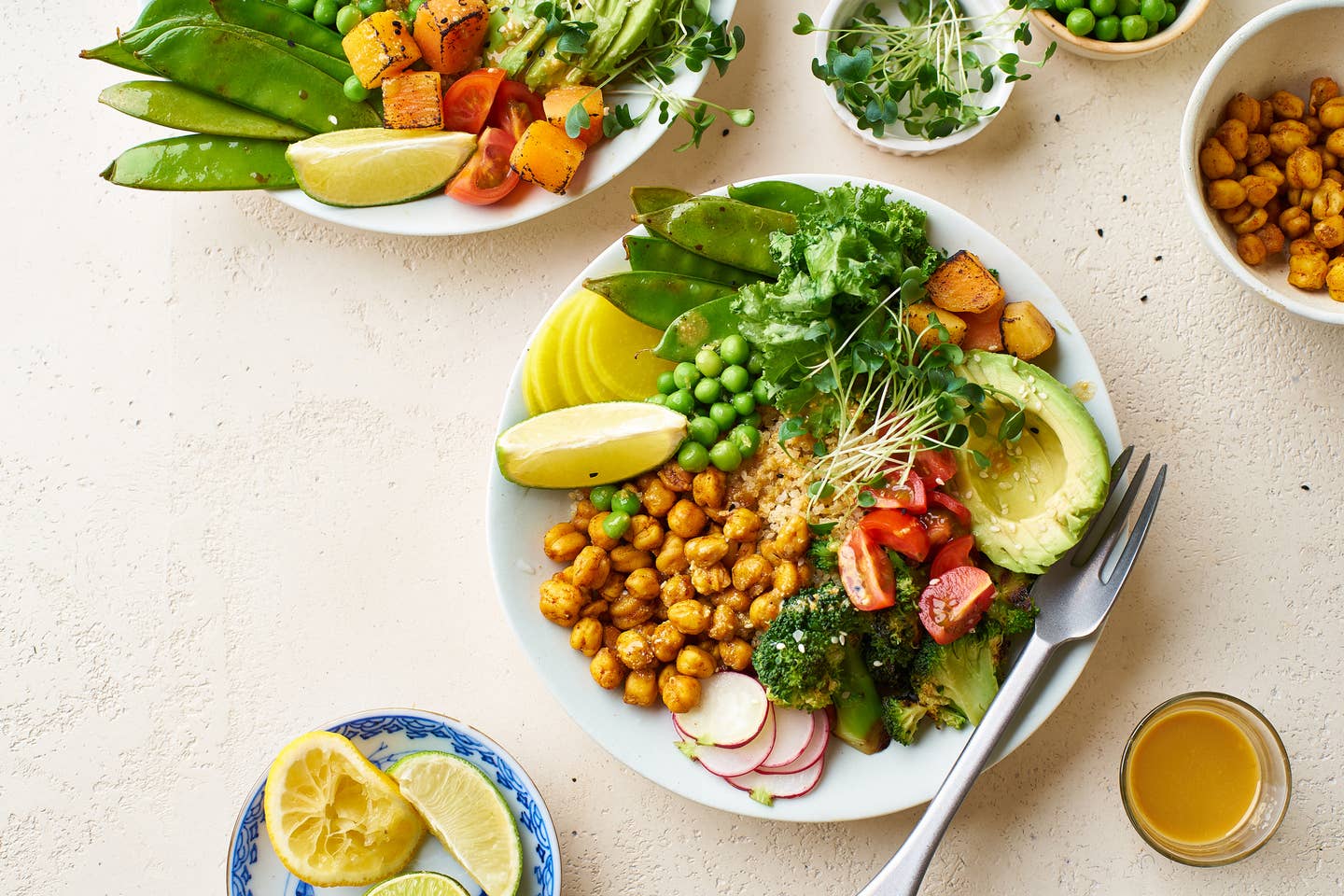
Should You Take Chlorophyll? An RD Explains the Health Benefits and Risks
If you’ve spent any time on TikTok, you already know that people are downing chlorophyll drops like crazy, to help boost energy levels, clear up their skin, promote quick weight loss, and even reduce body odor. The tempting promise is that just by adding 15 drops of liquid chlorophyll to your water — voila! — the benefits arrive. But does drinking chlorophyll water actually offer any health benefits? And with these touted benefits could there be a downside? Here's the unvarnished truth about nature's green juice, chlorophyll.
What is Chlorophyll?
The green pigments you see in plants and algae are actually chlorophyll. It helps plants convert energy from the sun and soil, to grow. Chlorophyll works by absorbing the sun's rays as the plant goes through photosynthesis. It contains vitamins, antioxidants, and other therapeutic properties that may be beneficial to our health.
How Much Chlorophyll Should You Take?
The liquid chlorophyll in those chlorophyll drops that many people are using to create their green water aren’t fully chlorophyll. Instead, the drops are a combination of chlorophyll with sodium and copper salts that forms chlorophyllin — a version of chlorophyll that’s believed to be more absorbable by the body. The FDA states that adults and children over the age of 12 can safely consume 100 to 200 milligrams of chlorophyllin daily, but should not exceed 300 milligrams.
What Are the Health Benefits of Chlorophyll?
There’s a surprising amount of research that showcases the potential benefits chlorophyll (and chlorophyllin) can bring to our body, but not all have been done on humans or consist of using liquid chlorophyll.
1. Chlorophyll boosts your skin
Chlorophyll may potentially give you the clear skin of your dreams, but only when used in topical form. A small 2015 study found that individuals dealing with acne and enlarged pores noticed an improvement in their skin when using a topical chlorophyllin gel after three weeks. Another study found similar benefits using topical chlorophyllin, but this time participants saw an improvement in sun-damaged skin after eight weeks of use.
2. Chlorophyll can help your body detox
There are many products and supplements that claim they help detoxify your body, and is chlorophyll water any different? First things first, your body naturally detoxifies itself through both your kidneys and your liver. Regardless of whether you've used alcohol, taken a drug, or ingested another foreign substance — such as pesticides in your fruit or vegetables, the liver's job is to filter out those unwelcome toxic chemicals and release them through your urine. What chlorophyll water could potentially do is support both the liver and kidneys by keeping them strong and pumping along at optimal levels in order to function properly.
An animal study published in the Brazilian Journal of Medical and Biological Research found that chlorophyll was helpful in reducing oxidative stress in the liver. Oxidative stress occurs when there is an imbalance between free radicals (bad) and antioxidants (good). When this occurs, it impacts the liver's ability to detoxify these “bad” guys. This can lead to cell and tissue damage.
When it comes to human research, the science is very limited: A very small study consisted of four volunteers. The results found that taking chlorophyll may limit ingested aflatoxin, which is a compound that has been linked with cancer.
3. Chlorophyll has been shown to help promote weight loss.
There is very limited research on whether or not sipping chlorophyll water can help with weight loss. A small study consisting of just 38 females who took a chlorophyll-containing green plant membrane supplement every day before breakfast for 12 weeks showed some benefit: The results found that those taking the supplement had greater weight loss than those who were consuming the placebo. The supplement group also saw improvements in cholesterol levels and decreased cravings for sweets.
Although the science behind chlorophyll looks promising, there need to be larger human studies (and reviews of populations taking it for longer periods of time) to confirm these preliminary results. Much of the current research also doesn’t solely focus on chlorophyll. There may be other factors that are playing a role in these benefits since chlorophyll is solely found in healthy, nutrient-dense green vegetables. So it could be that greater benefits come from eating leafy greens and high-fiber vegetables.
Foods With Chlorophyll
You don’t have to hop on Amazon or make a dash to your nearest health food store to get liquid chlorophyll to reap the benefits of this natural green liquid. Chlorophyll can easily be incorporated into your diet just by choosing fresh green veggies. Some of the best include:
- Wheatgrass
- Green beans
- Spinach
- Kale
- Parsley
- Arugula
- Peas
- Leeks
The green veggies are the ones that contain chlorophyll, but the amounts may vary. For example, spinach contains more chlorophyll than broccoli because of its intense green pigment. Although broccoli is quite green on the outside, when you cut into it, the color lightens into a whitish color, which indicates it has a smaller amount of chlorophyll. You could even make your own chlorophyll water by taking a handful of parsley and blending it up with water.
Incorporating these foods into your diet also comes with many short-term and long-term health benefits, and not just because of their chlorophyll content. Leafy green vegetables like spinach and kale are chock full of vitamins and minerals including vitamin C, vitamin K, calcium, iron, and fiber.
Always check in with your doctor before starting a new supplement
Before you hop on the liquid chlorophyll train, have a conversation with your doctor to ensure it’s safe for you to have this green beverage regularly. You should avoid taking chlorophyll supplements if you’re currently pregnant or breastfeeding, as the effects of it are unknown. If you’re given the okay, start slow. High doses of chlorophyll may bring side effects including gastrointestinal cramping, diarrhea, or dark green stools.
When choosing a supplement keep in mind that the FDA does not regulate these since, they are considered food, not drugs, and food products do not need approval before being released to the public to buy. Check for supplements that contain a GMP stamp of approval. This means “Good Manufacturing Practices,” which are regulations that the FDA has in place for those that manufacture, package, or hold dietary supplements. This ensures the identity, purity, quality, strength, and composition of the supplement you’re receiving.
Bottom Line: There Are Many Health Benefits Associated With Chlorophyll.
Try to avoid taking more than 100 to 200 milligrams of chlorophyllin daily, but the best way to get your greens is by eating them.
For more research-backed content, visit The Beet's Health & Nutrition articles.
More From The Beet






